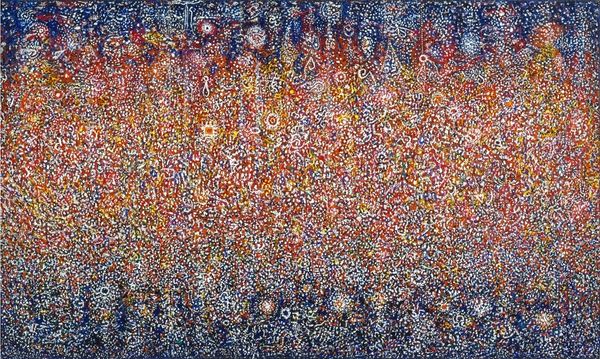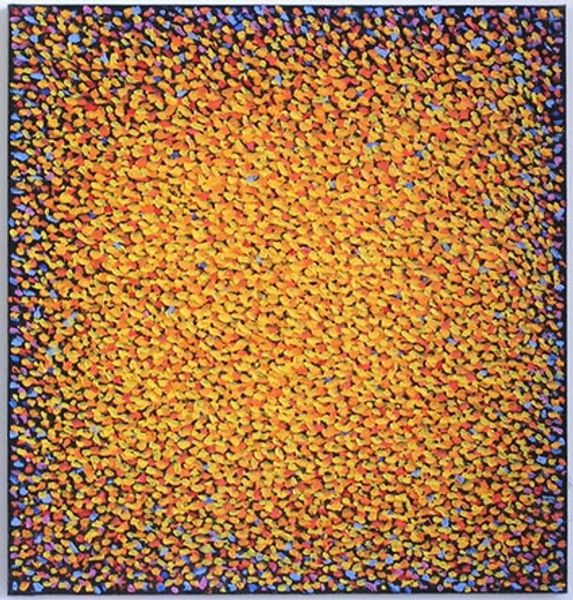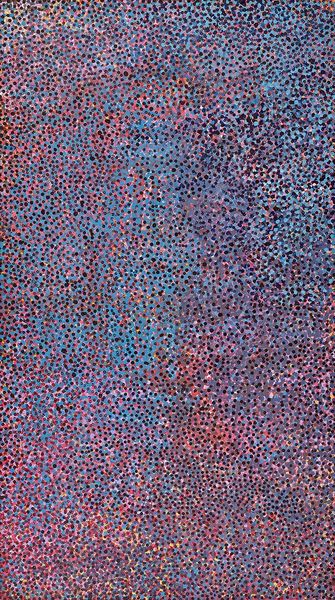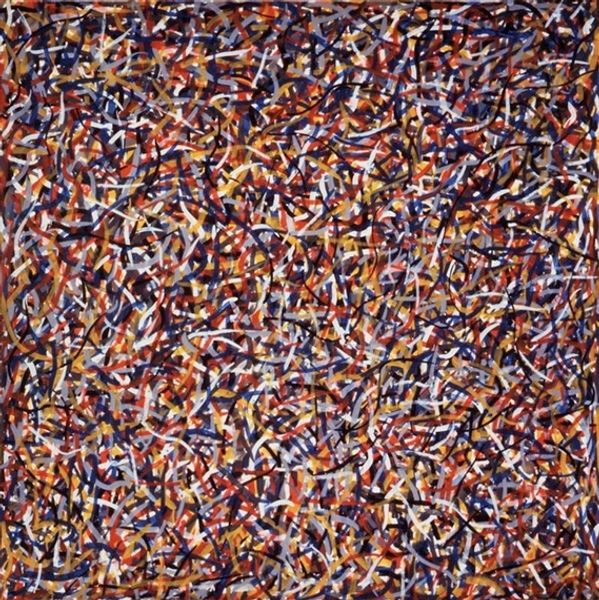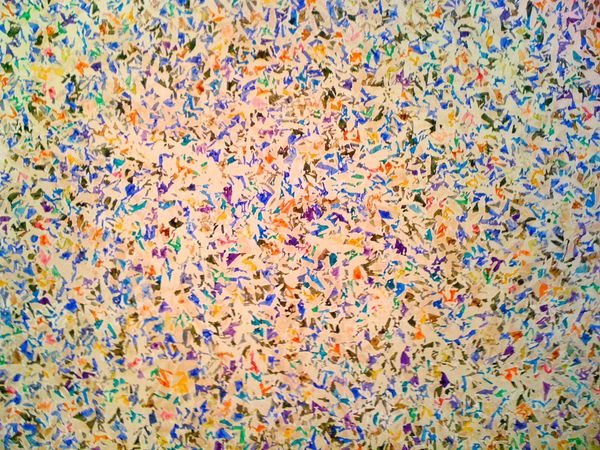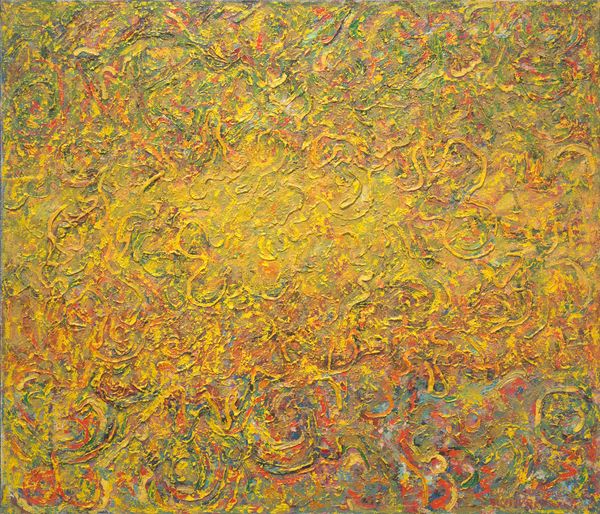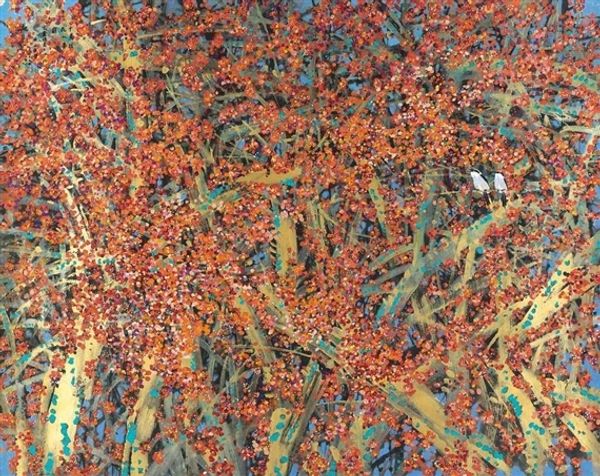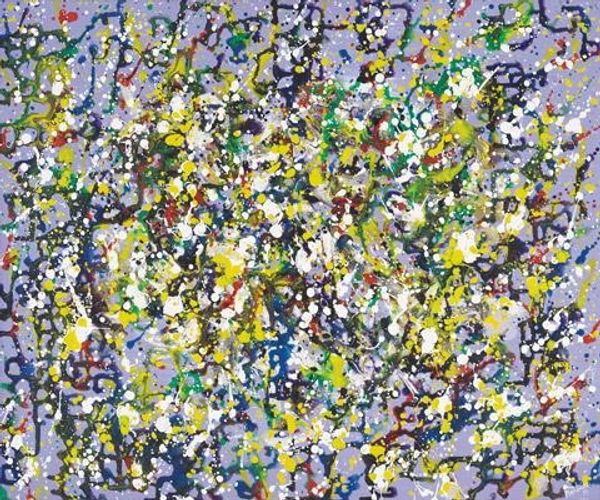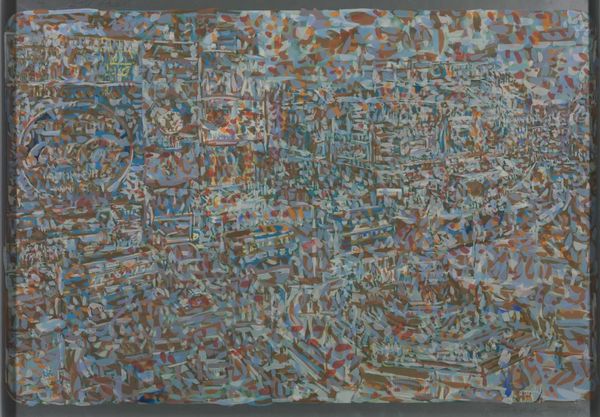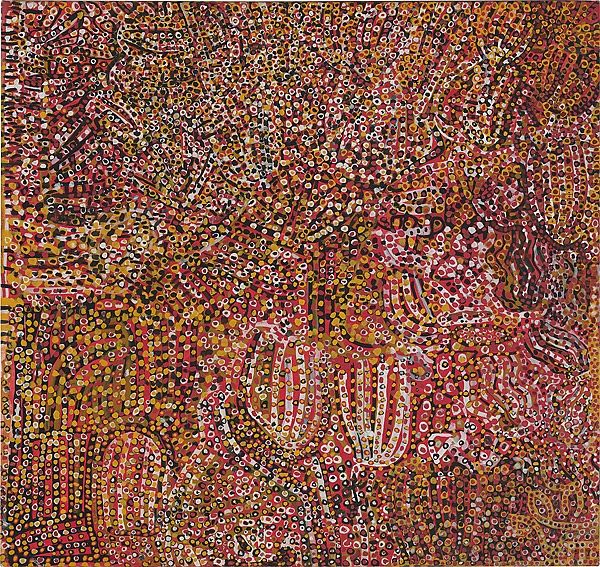
Copyright: Richard Pousette-Dart,Fair Use
Curator: At first glance, this canvas overwhelms the eye with its density. It is like looking at a field of stars, an intricate, endless pattern... but also perhaps more earthly than astral. Editor: And the earthly associations feel appropriate given we are observing "Presence Amaranth Garden," an oil on canvas creation by Richard Pousette-Dart from 1974. It’s classic abstract expressionism – rejecting clear representational forms for a play of color and gesture. Curator: Abstract it is, but the garden is there, nonetheless, in these micro-narratives played out across the field of vision. There’s a deliberate, almost meditative quality in the repeated marks – do you think this contributes to the artwork’s emotional resonance? Editor: Definitely. I am drawn to the implied sense of ritual—labor manifested on canvas. The artist engages with this almost obsessive act of creation, leaving it on display for us. As such, it becomes a historical record, too – a visual document reflecting post-war sensibilities and the search for meaning amidst uncertainty. Pousette-Dart had very mystical inclinations that underpinned his abstraction, so it seems natural for organic forms to act as a kind of connective symbol in his visual language. Curator: Yes, but not quite the visual language of realism. The shapes evoke living things without fully depicting them, more an essence than an imitation. They are almost glyphs, like potent symbolic shorthands distilled from the artist's emotional experience of being in nature. Do you see how these abstract forms may suggest archetypal symbols? Editor: Archetypes are a great touchstone, pointing out that symbols always change in the social and historical stream, but I understand what you're aiming at. If it evokes symbols from nature, does that imbue the garden space with meaning and make it feel 'real?' Does that bring the piece's meaning to the fore? Curator: Precisely, they give a weight to what would otherwise just be an aesthetic surface; they bring resonance by way of a pre-existing context. They ask, "How does art relate to history and our own perceptions?". That dialogue starts with symbol and moves into history and emotion and intellect all at once. Editor: Interesting, I had never seen it that way before. A complex piece like this pushes the boundary of what an image means to an audience that takes it in as the sum total of socio-political pressures. Curator: Exactly. So many ways to think about art!
Comments
No comments
Be the first to comment and join the conversation on the ultimate creative platform.
